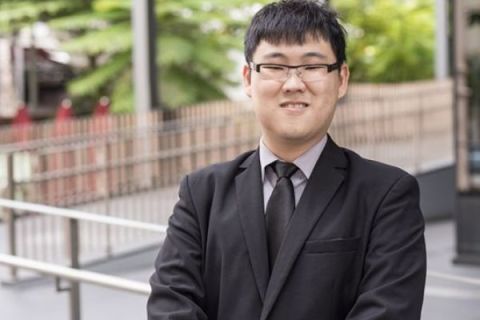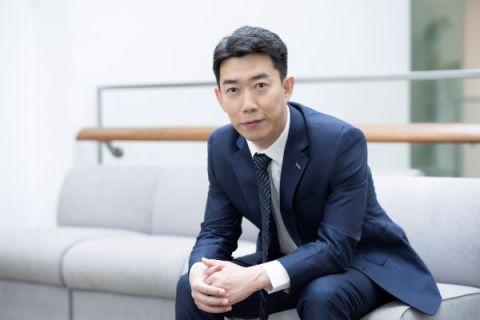
By Christie Loh
SMU Office of Research Governance & Administration – Associate Professor Yasmin Ortiga chats with Filipino nurses for a living. The sociologist at Singapore Management University (SMU) tends to ask them about their hopes and dreams, why they uprooted themselves to go work in a hospital miles away from their home in the Philippines, often leaving young children behind. Every conversation builds up her research on international migration.
Of late, the chats have thrown up cases of these migrant nurses choosing to bypass Singapore, which relies on Filipinos for over half of its foreign registered nurses. A blip or a notable shift in migration patterns? That is one of the questions Professor Ortiga seeks to answer in her latest research, “Tracing Nurse Trajectories: Multinational Migration Amid Global Competition”.
The proposal, which has received a Ministry of Education (MOE) Academic Research Fund (AcRF) Tier 2 grant, will be the first to quantitatively trace the diverse global pathways of migrant nurses, providing information such as time spent in each place, in relation to factors including age and social class.
“We know there is major competition for nurses. This project is basically about proving empirically that this competition has a way of moving nurses towards one place and keeping them away from others,” Professor Ortiga told SMU’s Office of Research Governance & Administration (ORGA) in an interview.
Illuminating the “middle space”
Steering away from conventional thinking in migration studies that an individual moves for personal reasons to a foreign place, her project will consider myriad external factors as well as the concept of some places being “stepping stones” before the individual settles down in a desired destination. This so-called “middle space” is what Professor Ortiga will scrutinise.
“Often, there’s this black box in the middle. For a long time, scholars didn’t try to understand how people move across borders, who handles their paperwork, and who gave them the idea to move to this place rather than another. Now, we know that there is a middle space of recruiters, brokers, state officials and other migrants who also influence that decision,” she explained.
“We’ve never really recognised this middle space in terms of how it shapes migration patterns. There has been more research on brokers in recent years, but even then, a lot of the focus has been on how brokers move people from Point A to Point B, it’s always a single origin and a single destination.”
The reality, she said, is “a global marketplace, where everyone is competing for the same pool of labour”.
Mixed-method research for new knowledge
This three-year project will produce new data to enrich migration studies.
To capture Filipino migrant nurses’ actual movements across borders alongside significant policy changes, Professor Ortiga will use the Event History Calendar, a survey instrument that allows researchers to reconstruct significant events in a respondent’s life history. The target is to survey around 2,400 Filipino nurses who have either worked or are currently working in Singapore – an established stepping-stone destination – and the United Kingdom (UK), a “desired” end-destination known to offer higher wages and the possibility of permanent residency. Comparing these two pathways will enable the project team to determine how changes in a desired destination affects nurse trajectories towards another.
To investigate how actors within the “middle space of migration” work, the team will conduct in-depth interviews with 50 state officials, brokers, hospital administrators, and nursing school owners, all from Singapore, the Philippines and the UK. This will shed light on the kinds of strategies formulated and implemented in a bid to influence nurses’ career decisions.
For insight into the nurses’ perspectives, the team will use the “digital story completion method”, a popular approach in the medical humanities. Around 100 nurses, who are either working in or had passed through Singapore, will go online to read the beginning of a hypothetical scenario or so-called “story stem”, and then complete the story in their own words by typing in their responses. The project team will then analyse the completed stories to see how nurses’ responses change when variables change.
This will mark the first time that the digital story completion method is being implemented in Singapore, having enjoyed success in other research sites, said Professor Ortiga.
Impact on stepping-stone countries like Singapore
Professor Ortiga believes the project will help policymakers who are facing growing competition for the migrants they need to meet their population’s burgeoning demand for healthcare workers. Singapore is a prime example: Not only does it have to fend off other “stepping stones” – such as Kuwait and Japan – for migrant nurses, it is also feeling the heat from desired destinations that have started relaxing their formerly-stringent criteria. So there is a fight for numbers, as well as for the crème de la crème.
“If you look at the numbers, Singapore is still able to recruit nurses from the Philippines, but my question is, ‘Who is coming?’ My hunch is, it’s not the best nurses,” said Professor Ortiga. “The most experienced nurses that come from the Philippines’ best nursing schools – they are the ones more likely to skip to their desired destination.”
One strategy is to craft state policies and programmes geared towards attracting overseas nursing talent, she said. Another is for Singapore to play to its advantage of proximity.
“What I hear from my interviewees is that it’s very hard to get time off as a nurse in Singapore: Very heavy workload, stressful job. So some of them do wonder, what’s the point of being so close if I don’t get to fly home anyway; I might as well work in Saudi Arabia, where they give me free housing, or go straight to the UK.” In short, offer work-life balance to the migrant nurse, too, says the sociologist with her ear firmly to the ground.
Back to Research@SMU November 2025 Issue
See More News
Want to see more of SMU Research?
Sign up for Research@SMU e-newslettter to know more about our research and research-related events!
If you would like to remove yourself from all our mailing list, please visit https://eservices.smu.edu.sg/internet/DNC/Default.aspx

